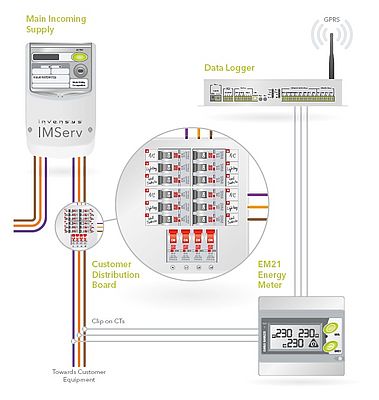The UK industry consumed 320TWh of energy and emitted 95 million tonnes of carbon dioxide into the atmosphere. This figure represents around 17% of the UK’s total energy use, with most of these emissions coming from manufacturing1. According to James Palmer, Regional Sales Manager at IMServ one of the UK’s largest independent energy data management providers, the manufacturing sector has been too focused on implementing easy and low cost energy saving initiatives rather than looking at the bigger picture.
James explains, “The sector has made real inroads at making minor energy reductions such as introducing low energy bulbs, encouraging staff to turn off lights and including PIR sensors in toilets. However, lighting only accounts for 20% of the UK’s energy usage so looking at the other 80% is critical.
“This represents a huge missed opportunity. IMServ estimates average savings of up to 30% can be made if measures are taken to tackle the most energy intensive parts of their business. The key is to understand where the energy is being used and the best way to do this is installing Sub Metering. This could be on individual production lines or departments and is used to identify the best and worst performers. In addition it can also help identify potential problems with machinery as inefficiency is usually a symptom of an underlying problem.”
James continues, “The manufacturing sector is diverse and spans many industrial areas. The largest end users of energy for the industrial sectors include cement & ceramics, chemicals, engineering food and drink, paper manufacturing and publishing/printing.
“Companies in these sectors typically treat energy bills as a fixed cost but are under increasing pressure to reduce energy expenditure and increase profits. Being able to accurately measure energy usage in the first instance via Automated Meter Readers is the way forward for these sectors. For example 1% of industrial energy consumption is used for lighting, but it can be up to 7% for some manufacturing companies.
“Reductions in carbon emissions will not only contribute to combating climate change, but also demonstrate a level of corporate social responsibility to stakeholders.”
IMServ works with many UK manufacturers and has used its experience to compile a top list of specific areas that will make an impact on energy costs:
• Identify overnight power users
• Sub Meter production lines to identify best performers
• Set up league tables to allow comparisons of different manufacturing sites
• Install lux sensors to maximise the value of ambient lighting and ensure orientation of lighting banks are parallel to windows
• Control heating and cooling intelligently to take into account outside temperature, building fabric and orientation
• Use dashboards to gain employee buy in, directly relating data to production units or profit
• Monitor electricity, gas, water and oil/diesel and use a single point to correlate all data
• Install a variable speed drive, this can save up to 30% on running costs
• Turn off compressors. An idling compressor can use up to 40% of its full load
• Ensure accurate energy monitoring in order to give the precise ROI on new equipment not just an ROI on the monitoring hardware
James concluded, “Accurate measurement of energy usage through the use of Automated Meter Readers will give companies the information collateral to implement changes and behaviour. Aggressive ROI targets will also demonstrate the value of any energy savings, providing additional revenue to its profit line.”
By James Palmer, Regional Sales Manager at IMServ
Manufacturing Sector
Needs to Look at the Bigger Picture
- by IMServ Europe Ltd
- November 11, 2013
- 244 views
Disclaimer: Content published by TIM Global Media, including text, images, and videos, is either created in-house or provided by Suppliers/Manufacturers with their approval. Suppliers/Manufactures warrant that their materials do not infringe third-party rights and agree to indemnify and hold TIM Global Media harmless from any related claims.
























